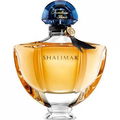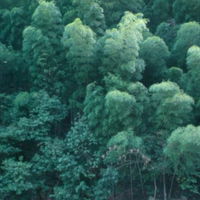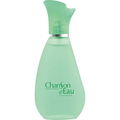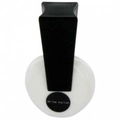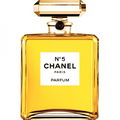06/11/2015

BrianBuchanan
351 Reviews

BrianBuchanan
Top Review
8
The gambler's green amber
Green baize : on the smelling strip the motif of Émeraude is clear from the start. This woolen fabric used to cover card tables would have been familiar to François Coty as he was a player of the game Piquet.
Analysing the baize effect reveals an opposition of citronella and rose, a woody background with a hint of civet and a sweet note strongly contrasted with a bitter edge.
Very soon a powdery iris note rises. This seems to combine with a floral bouquet to give a bizarre yet delightful accord of of soft pink sweet rubber, backed up by a hard and dry citrus note. A dark animalic undertone appears at times to be part of the citrus - floral accord, and at other times to form a base beneath it. Herbs also contribute to the picture, lending an additional piquancy and greenness. I think sage as well as the tarragon mentioned by Barbara Herman are candidates.
There is more than a passing resemblance to Shalimar and the Guerlain style, in particular the use of herbs.
In a profile as complex as this it's possible to pick out several themes running side by side. At one moment it could display a pink rubbery floral, the next bright lemon, and later toffee. Other combinations may pop up at any time giving the perfume an unpredictable character and lots of interest; and green baize shows up of course.
Despite feeling old fashioned it doesn't appear dated; it's not of the moment but then it's not a relic either. Émeraude makes a quite acceptable masculine. The hardeness of the citrus, its dark undertone and odd rubbery note all mitigate against an out and out feminine interpretation. In fact it doesn't feel like a feminine at all in todays terms, except maybe in the dry down.
The rubber also bears reference to Bulgari Black, but a passing glance only, Coty wisely kept it toned down. The citrus is notable for its piquancy and impressive longevity; obviously there are more than citrus oils involved here, possibly aldehydes and elemi.
Although not short lived, by one hour all the elements are in place with a sweet toffee amber already on display. Coty managed to push most of the profile's development into the opening phase, allowing it to merely unwind thereafter. This allows for the greatest complexity over the longest time, and he achieves this without sacrificing clarity. The structure is by no means linear however, and it may surprise you!
The green baize theme remains intact deep into the profile. How the baize is constructed and how it can last so long are not clear but a galbanum resinoid seems to be a possibility.
Coty may have also used clary sage - judging by a tobacco note in the dry down.
There seems to be a lot more going on here than the note pyramid would suggest.
The soupy aroma of opopanax forms one key to the base; its spicy side linking up with the herbs, and its resins combining with the balsam found in the other key - a vanillic amber which spreads a sweet powdery texture over the base.
A sweet and spicy jasmin bouquet, toffee like amber and civet lie on the card table at four hours.
At seven hours what's left are amber, tobacco and pale dried flowers.
This is a fabulous ride, full of plot twists to keep the nose and brain engaged.
The technical aspects are quite brilliant. The manner in which Coty could manipulate his materials is really accomplished, and all the more astonishing in someone who was largely self taught.
Émeraude is built around his brilliant citronella and rose formula first used in Une Rose Jacqueminot - which was a huge success - taking a million francs in four months at the start of the twentieth century.
It's no wonder that there is a certain antique quality to Émeraude, it comes from another era and will soon be 100 years old, but no matter, this pictorial masterpiece in green is still just as beautiful today.
This review is of the Perfume in a squat glass bauble labelled Coty Div. Pfizer, and coded to year 04 on a ten year cycle. Which decade? I don't know.
Analysing the baize effect reveals an opposition of citronella and rose, a woody background with a hint of civet and a sweet note strongly contrasted with a bitter edge.
Very soon a powdery iris note rises. This seems to combine with a floral bouquet to give a bizarre yet delightful accord of of soft pink sweet rubber, backed up by a hard and dry citrus note. A dark animalic undertone appears at times to be part of the citrus - floral accord, and at other times to form a base beneath it. Herbs also contribute to the picture, lending an additional piquancy and greenness. I think sage as well as the tarragon mentioned by Barbara Herman are candidates.
There is more than a passing resemblance to Shalimar and the Guerlain style, in particular the use of herbs.
In a profile as complex as this it's possible to pick out several themes running side by side. At one moment it could display a pink rubbery floral, the next bright lemon, and later toffee. Other combinations may pop up at any time giving the perfume an unpredictable character and lots of interest; and green baize shows up of course.
Despite feeling old fashioned it doesn't appear dated; it's not of the moment but then it's not a relic either. Émeraude makes a quite acceptable masculine. The hardeness of the citrus, its dark undertone and odd rubbery note all mitigate against an out and out feminine interpretation. In fact it doesn't feel like a feminine at all in todays terms, except maybe in the dry down.
The rubber also bears reference to Bulgari Black, but a passing glance only, Coty wisely kept it toned down. The citrus is notable for its piquancy and impressive longevity; obviously there are more than citrus oils involved here, possibly aldehydes and elemi.
Although not short lived, by one hour all the elements are in place with a sweet toffee amber already on display. Coty managed to push most of the profile's development into the opening phase, allowing it to merely unwind thereafter. This allows for the greatest complexity over the longest time, and he achieves this without sacrificing clarity. The structure is by no means linear however, and it may surprise you!
The green baize theme remains intact deep into the profile. How the baize is constructed and how it can last so long are not clear but a galbanum resinoid seems to be a possibility.
Coty may have also used clary sage - judging by a tobacco note in the dry down.
There seems to be a lot more going on here than the note pyramid would suggest.
The soupy aroma of opopanax forms one key to the base; its spicy side linking up with the herbs, and its resins combining with the balsam found in the other key - a vanillic amber which spreads a sweet powdery texture over the base.
A sweet and spicy jasmin bouquet, toffee like amber and civet lie on the card table at four hours.
At seven hours what's left are amber, tobacco and pale dried flowers.
This is a fabulous ride, full of plot twists to keep the nose and brain engaged.
The technical aspects are quite brilliant. The manner in which Coty could manipulate his materials is really accomplished, and all the more astonishing in someone who was largely self taught.
Émeraude is built around his brilliant citronella and rose formula first used in Une Rose Jacqueminot - which was a huge success - taking a million francs in four months at the start of the twentieth century.
It's no wonder that there is a certain antique quality to Émeraude, it comes from another era and will soon be 100 years old, but no matter, this pictorial masterpiece in green is still just as beautiful today.
This review is of the Perfume in a squat glass bauble labelled Coty Div. Pfizer, and coded to year 04 on a ten year cycle. Which decade? I don't know.
1 Comment





























 Top Notes
Top Notes  Bergamot
Bergamot Lemon grass
Lemon grass Lemon
Lemon Orange
Orange Heart Notes
Heart Notes  Rose
Rose Rosewood
Rosewood Ylang-ylang
Ylang-ylang Jasmine
Jasmine Base Notes
Base Notes  Vanilla
Vanilla Patchouli
Patchouli Ambreine
Ambreine Opoponax
Opoponax Benzoin
Benzoin Sandalwood
Sandalwood

